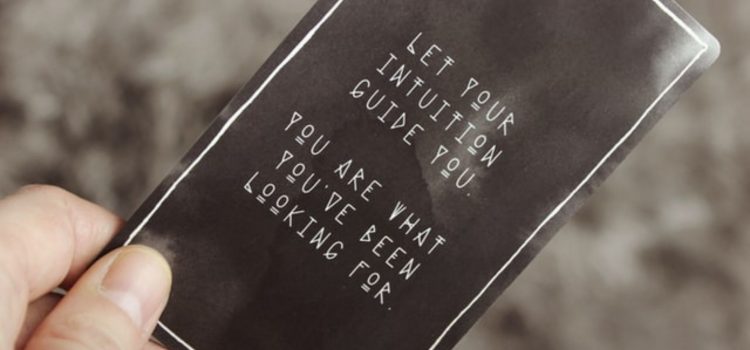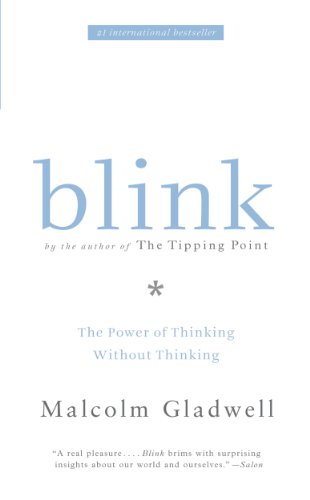

This article is an excerpt from the Shortform summary of "Blink" by Malcolm Gladwell. Shortform has the world's best summaries of books you should be reading.
Like this article? Sign up for a free trial here .
Why do they say “trust your gut”? How do you know when your gut is right?
Gut decisions can be advantageous in some circumstances, but they can lead you astray in others. Malcolm Gladwell suggests that you can make better instinctive decisions by providing the unconscious mind with structure. This involves rehearsing your desired spontaneous responses and developing rules that you can fall back on in times of stress.
Here’s how you can “train your gut” to make better decisions, according to Gladwell.
Improving Our Gut Judgments
In his book Blink: The Power of Thinking Without Thinking, Malcolm Gladwell provides the following specific advice for improving instinctive or “gut” decision-making:
- Incorporate both deliberate and unconscious thinking.
- Be selective with the information you consider.
- Rehearse.
- Avoid making snap decisions when you’re stressed.
Let’s look at each piece of advice in more detail.
1. Incorporate Both Deliberate and Unconscious Thinking
Neither deliberate nor intuitive decision-making is inherently good or bad. Whether these strategies are good, bad, or neutral depends on the situation. If we have time, resources, and a clearly defined task, deliberate decision-making is productive. It can also prime us for “rapid cognition,” or snap judgments.
Part of how we can make better decisions is to understand when the deliberate approach is best, and when the intuitive approach is best. Gladwell suggests that, where possible, we start with deliberate decision-making. This lays the groundwork for future rapid cognition.
| Layering Deliberate and Unconscious Thinking in Team Sports We can take any team sport as an example of the combination of conscious and unconscious thinking that Gladwell suggests. In most of these sports there are three levels of structure. First, we have the rules of the game. These give us an overarching goal and clear parameters, which allow us to easily frame the decisions we make as good or bad, depending on their outcomes. (Did that pass lead to a goal? If so, it was a good decision. If the ball got stolen by the other team, it was a bad decision.) Second, we have our game plan for a particular match. This is created through deliberate thinking by the coach and players. Finally, we have the spontaneous, instinctive decisions that we make during the game. The rules of the game and our overall game plan both provide a structure for the rapid-fire decisions that we make after the game starts. |
2. Be Selective With the Information You Consider
Gladwell’s second piece of advice is not to overload yourself with detail. Too much information can be a burden. Find the most essential data points and make a decision based on those.
You don’t need a lot of information to identify patterns—just the right information. If we want to protect the integrity of our snap judgments, we need to limit the data we consider when making a decision.
(Shortform note: For this advice to be genuinely useful, we need to have some way of distinguishing crucial from superfluous information. Gladwell doesn’t provide this, but a good way of doing this is interpreting the information we receive as “signal,” or information that reveals key patterns, plus “noise,” or information that distracts us from the signal. If we listen carefully for the signal, we’re more likely to be feeding meaningful information into our unconscious decision-making apparatus. As Nate Silver argues in The Signal and the Noise, people who are highly accurate forecasters tend to use statistical analyses to separate signal from noise. They also avoid being overconfident in their predictions and pay extreme attention to detail.)
As an example of the pitfalls of overloading yourself with information before a decision, Gladwell discusses a shift that occurred at Cook County Hospital in Chicago in the late 1990s, when it changed the way it assessed ER patients with chest pain. Previously, doctors had taken a multitude of complex factors into account when diagnosing heart problems, leading to many inconsistent and potentially incorrect decisions.
A new computer algorithm reduced that large number of factors to four. The algorithm increased the accuracy of negative diagnoses by 70% (reducing the costs to the hospital of admitting patients who weren’t in danger of having a heart attack) and increased the accuracy of positive diagnoses to 95% (saving the lives of people who did go on to have major complications).
3. Rehearse
Gladwell suggests that to make better snap decisions, you need to practice. He suggests two types of specific practice. First, you should practice making fast decisions in stressful situations.
| How Does Rehearsal Work? Practice, Automatization, and the Brain It seems obvious that practicing something will help us get better at it. But what physiological mechanism underlies this process? Norman Doidge argues in The Brain That Changes Itself that when you practice something, you’re increasing your brain’s efficiency in executing the task. New tasks (for example learning to play scales on the piano) are cognition-heavy, recruiting a massive number of neurons across different brain areas. Practice helps our brains determine which particular networks or neurons are best suited for the task and lock in their responses, freeing up cognitive capacity for more and more challenging versions of the task. Interestingly, mental rehearsal seems to be almost as effective as rehearsing the whole action. Neuroimaging studies of experts back up this interpretation—for example, the brains of professional violinists are more efficient and focused in their processing of motor movements than those of amateurs, which frees up capacity for the higher-level processes involved in interpretation and musicality. Physically and/or mentally rehearsing before a job interview or presentation has the same effects, making lower-level processes more automatic and freeing up conscious processing capacity to help you respond thoughtfully to those tricky questions. |
Rehearse “Mind Reading”
In addition to practicing fast decision-making, Gladwell says you should practice reading the social environment. Here he focuses on learning to pick up the fleeting, unconscious “microexpressions” that people make that betray their true thoughts and emotions. Gladwell calls this “mind reading.”
We can get better at understanding others, and consequently make more accurate snap judgments about them, by practicing reading people’s facial expressions. Let’s take a closer look at how we thin-slice people, or make judgments about them by reading (or failing to read) their minds.
Humans are highly social animals. Our brains are tuned to cues that can help us navigate the complex social world. An important part of this is being able to make good guesses about what’s going on in other people’s minds. (Shortform note: In psychology, this ability to construct a model of someone else’s mind is called “Theory of Mind.” It includes keeping track of the other person’s knowledge—do they have the same information as I do?—as well as guessing at their emotional state.)
Part of our fluency in mind-reading comes from our ability to use others’ facial expressions to infer their personality and predict their behavior.
Microexpressions are the hardest expressions to catch. They’re almost imperceptible, lasting a fraction of a second. You might be good at broadly controlling the expressions your face makes, but you can’t control these involuntary expressions.
This is how we thin-slice people—our unconscious minds make note of subtle muscle movements in the face that are too fleeting for our conscious minds to detect.
(Shortform note: The effectiveness of analyzing microexpressions, especially to detect lies, is controversial. First, lies aren’t always associated with microexpressions: One study found them in only around 20% of participants who had been instructed to mask or neutralize their natural expressions. When microexpressions did occur, they were often inconsistent with the emotion being hidden.)
4. Avoid Making Snap Decisions When You’re Stressed
As Gladwell notes, our ability to read facial signals and body language is enormously sophisticated. Most of the time, we’re really good at reading people’s minds by subconsciously picking up on subtle signals.
Still, mistakes happen all the time. We get into arguments and hurt others because we misinterpret what they’re feeling or thinking. Gladwell speculates that two things can affect our accuracy when recognizing the facial expressions of others: rushed decisions and underlying stress.
Even split-second decisions take a few moments. Thin-slicing appears to be so fast it’s automatic, but it’s not. In the few seconds it takes to make a snap judgment, we’re gathering information and weighing it. When we don’t have time to properly process information, we fall back on stereotypes. Reactions based on stereotypes are the lowest-quality snap judgments.
Gladwell says that slowing down helps us make better decisions, even quick decisions. Waiting a beat can make all the difference.
Rehearse Being in Stressful Situations
How can you avoid making bad decisions in stressful situations? Gladwell suggests that you practice making decisions in environments that mimic stressful situations. For example, rehearse an upcoming job interview or presentation in an environment that mirrors the event as closely as possible. Consider factors like the time of day, the people involved, and what you’ll wear.
These drills allow you the time to figure out the most appropriate response to the stressor. Then, when you’re in a moment of stress, you’ll have practiced the desired response so often that it’s automatic. You can rely on your unconscious mind in the moment rather than having to make a rational decision. This is a way to inoculate yourself against stress.
Gladwell describes a security firm that has bodyguards repeatedly encounter an aggressive dog and tracks their heart rates (an indicator of stress level). The first time they confront the dog, their heart rates are 175, so high that their vision is impaired. By the fourth time, their heart rates are usually around 110 and they’re able to function under pressure.
(Shortform note: This echoes SEAL commanding officer Richard Marcinko’s famous piece of advice: “The more you sweat in training, the less you bleed in combat.” If you’re in a stressful situation and you haven’t had a chance to practice, consider using the STOP mental checklist: Stop what you’re doing; Take a few deep breaths and center yourself; Observe your mind, body, and emotions; Proceed with the action, taking into account what you’ve observed.)
———End of Preview———

Like what you just read? Read the rest of the world's best summary of "Blink" at Shortform . Learn the book's critical concepts in 20 minutes or less .
Here's what you'll find in our full Blink summary :
- How you can tell if a marriage will fail, within 3 minutes
- Why your first impressions are usually surprisingly accurate
- The dark side to making first impressions, and how to avoid the,






